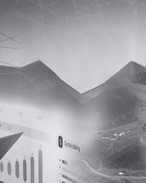This article is 8 years old. Images might not display.
Lincoln Minerals is poised to become the name on every graphite customers’ lips.
The company may not yet be as well-known as graphite developer Syrah Resources, but it is rapidly advancing its world-class graphite deposit on South Australia’s Eyre Peninsula.
Since receiving a mining lease mid-2016 for its high-grade graphite deposit, the company has already started fielding calls from potential customers in Asia and Europe and managing director Dr A. John Parker anticipates keen interest.
The company’s 100%-owned Kookaburra Gully deposit, just 35km north of Port Lincoln, contains 2.2 million tonnes at 15.1% total graphitic carbon (TGC), ranking it within the world’s top 10 flake graphite deposits in terms of grade. (Drilling at Kookaburra Gully in April, pictured below)
Archived article: image not displayed.
In addition, the company owns the neighbouring historic Koppio graphite mine which adds a further 1.85Mt resource at 9.76% TGC.
Beyond this 4Mt project total, Lincoln Minerals has set itself an exploration target of up to 90Mt in its surrounding landholding.
Kookaburra Gully boasts a number of key advantages – it contains a globally significant graphite deposit, there is huge exploration upside, management has extensive experience in the region, the board has strong connections with Chinese resource project financiers and there is low sovereign risk in the mining-friendly state of South Australia.
In addition, the low cap-ex project expects to offer competitively-priced, high quality graphite that will be as “clean and green” as customers are starting to demand.
“That is a crucial point of difference for us and our project,” Parker notes.
“Our whole process stream will be environmentally clean and this has been a challenge for some Chinese producers, who are struggling to meet the environmental standards required by battery producers.”
Lincoln is currently working on its Program for Environment Protection and Rehabilitation approval and Parker hopes the project would be under construction before the end of 2017, subject to finance and final government approval.
The estimated capital expenditure is less than A$50 million (US$38.2m) for the project and while the company is fine-tuning its optimisation studies to ascertain exact costs, Parker is in the fortunate position of being confident of gaining project finance.
“I expect the main issue for development will be finance and I’ve basically been told ‘don’t worry about finance’ by the board,” he said.
Three of the company’s four directors have strong Chinese links and influence in raising funds, and have taken a long-term strategic interest in graphite development in the Eyre Peninsula.
In fact, the peninsula has been dubbed the “Pilbara (Western Australia’s iron ore-rich region) of graphite” thanks to its graphite potential and it lies within the well-endowed Gawler Craton, which also holds BHP Billiton’s enormous polymetallic Olympic Dam Mine to the north.
Non-executive chairman Yubo Jin has a Master of International Law and has a wide range of political and business networks in mainland China, Hong Kong and other Asian countries.
Non-executive director Eddie Pang has an Honours degree in chemistry and operates a Shanghai-based trading business, while James Zhang – who was appointed to the board in February – has extensive real estate and business development and management experience in China, Hong Kong and Australia.
The company is tightly held and its top 20 shareholders own 73.65% of the stock.
Pausing for a moment to compare Lincoln Minerals’ market capitalisation (A$16.5 million or US$12.6m), with fellow ASX-listed graphite companies Syrah Resources (A$1.07 billion/US$0.8b) and Kibaran Resources (A$46.39m/US$35.4m), it is clear to see why Parker believes Lincoln is seriously undervalued.
Syrah holds the world’s largest reserve of flake graphite at its Balama project in Mozambique, which is under development thanks in part to a A$194 million capital raising in mid-2016. The project’s ore reserve of 81.4Mt at 16.2% TGC will provide 40 years of commercial production.
Kibaran is aiming to fast-track into production its Tanzanian Epanko graphite project, which has a 10.9Mt ore reserve at 8.6% TGC.
Meanwhile, Lincoln has a low cap-ex project, a high-grade resource, an approved mining lease and is in a low-risk jurisdiction with rigorous environmental criteria.
Archived article: image not displayed.
“If you compare us to Syrah and Kibaran, I think we’re currently undervalued,” Parker, pictured left, said.
“We have a high-grade graphite deposit of global significance and it may not be as large, but do we need to have 1 billion tonnes of graphite ore? We’ve made the decision that we don’t.
“We’ve got 4Mt in total, and more than half of that or the first seven-year supply is at 15.1% TGC and we can produce the high-value flake graphite.
“We may not be able to produce quite as much as our competitors, but it’s certainly a good, high grade deposit.”
Lincoln has detailed optimisation studies underway that will feed into a definitive feasibility study.
“We’ll have a better idea of our capital expenditure and operating costs within the next few months,” Parker said.
While these studies are underway, Parker emphasised the high-grade resource would result in a quality product that should be globally competitive in terms of cost and economics.
Lincoln’s life of mine operating expenditure for mining, processing and transport to Port Adelaide has been estimated at A$704 per tonne of flake graphite concentrate, based on 90% recovery.
Tests to date have shown a simple flotation process will yield grades above 93% TGC without chemical leaching, which can lift concentrate to the highly valuable range above 99.95% TGC.
“We can’t produce anything better than Mozambique or China but it will be low cost, high quality and crucially, in a low sovereign risk jurisdiction and we’ll be producing a very clean and green product,” he said.
Parker leads the management team with more than 40 years’ experience on the Eyre Peninsula, which was also the subject of his PhD.
The team brings a wealth of local and international experience to the project, which has seen Kookaburra Gully progress rapidly from its first electromagnetic survey in 2012 to receiving a mining lease four years later and potentially being in development next year.
The company has also signed a Memorandum of Understanding (pictured right) with Tumby Bay to maximise benefits within the district council.
Archived article: image not displayed.
Parker sees two other areas of growth for the graphite market aside from the oft-referred to use in lithium-ion batteries.
“Spherical graphite in lithium-ion batteries is definitely an area of growth and we’re seeing the electric vehicle and storage battery market growth continuing certainly well into the next decade,” he said.
“But we also expect to see growth in expandable graphite, which is basically chemically-treated flake graphite that’s used as a fire retardant, in fire extinguishers, and in making graphite foil, which is used as car head gaskets and a heat shield in mobile phones.
“And the third area of growth is in a proven form of solar power generation, such as the proposal by Australian company Solastor to build a solar-thermal farm in South Australia.”
Solarstor intends to use mirrors to direct sunlight into 10-tonne graphite blocks at the top of 24m-high towers, and the stored heat will convert water to steam for power generation.
“Their proposal for Port Augusta, of 1700 towers each using a 10t graphite block, means you won’t need too many solar farms to soak up all the graphite we could produce,” Parker said.
“We’ve had talks with them and although they’re currently using the more expensive synthetic graphite, we see the solar-thermal power industry as another opportunity for us.”
As the optimisation studies progress, Parker is confident of Lincoln Minerals’ ability to produce a globally competitive product.
“We have a world-class deposit and what will be a globally competitive mining operation in a low sovereign-risk state,” he concluded.
“We’re very experienced in both graphite and the Eyre Peninsula and we look forward to meeting future customers’ demands.”
Lincoln Minerals - at a glanceArchived article: image not displayed.
HEAD OFFICE: Suite 4, Level 7, 350 Collins St, Melbourne VICTORIA 3000 PH: +61 3 9600 0782 FAX: +61 3 9600 0783 EMAIL: info@lincolnminerals.com.au WEB: www.lincolnminerals.com.au DIRECTORS: Yubo Jin, Dr AJ Parker, Eddie Pang, James Zhang SHARES ON ISSUE: 368.4 million MARKET CAP (at 27 Oct 2016): A$16.2 million MAJOR SHAREHOLDERS: Poan Group Holdings 15.52%; Regal Fortress 11.29%; Good Make Inc 10.57%; Able Creativity Investment Ltd 5.43%; Everchance Int. Industrial Ltd 5.43%
|
























